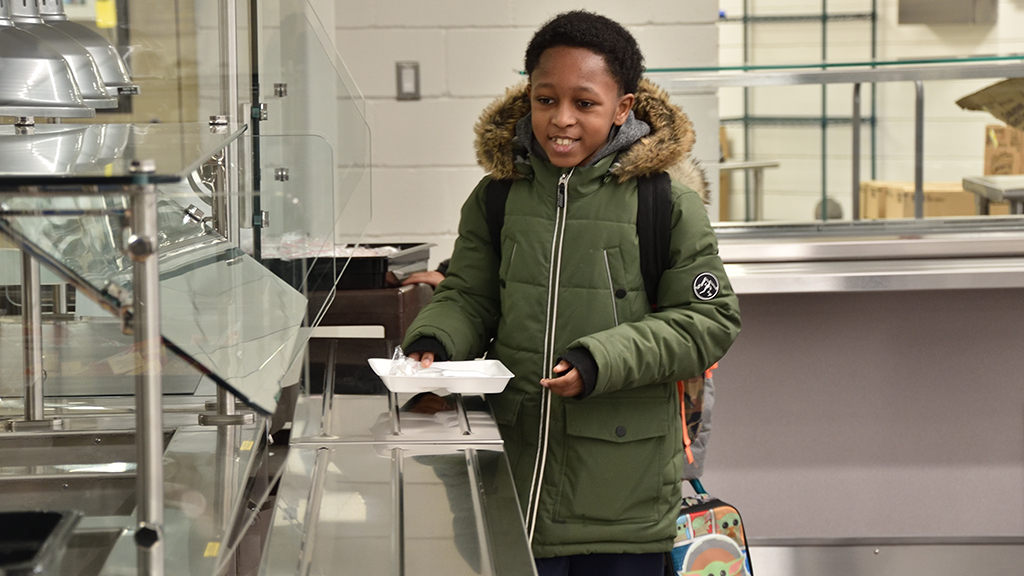
A student lines up for breakfast during the opening of the new kitchen serving the Pontiac School District’s International Language Academy and the International Technology Academy campus.
Maintaining the integrity of a school district’s facilities is an important part of ensuring that students can receive the highest quality education possible. Outdated and underperforming physical structures and building systems can directly impact student achievement and safety. However, the costs associated with maintaining such facilities and systems can often strain a school district’s budget, leaving less funding available for critical educational initiatives.
The expenses involved in sustaining facilities, including electrical, plumbing, heating, ventilation, telecommunications, and security systems, can be significant. If these features are not adequately maintained, they can create uncomfortable and unsafe conditions for students and staff. In addition, deteriorating systems can lead to unexpected problems that require repairs or replacements that siphon off funds that could have been used for improving student success.
Preventive maintenance is essential to manage the costs of school facilities, which also are often a vital resource for the community. Regularly scheduled preventive measures help avoid costly repairs and replacements down the road.
It is crucial for school districts to prioritize infrastructure maintenance and repairs when planning their educational initiatives. By managing these costs effectively, districts can minimize expenses and allocate more funds to enhance student outcomes. Understanding the impact of facility maintenance on the budget and implementing preventive measures can help ensure that educational priorities receive sufficient funding.
To generate much-needed financing for school projects, districts often utilize bond projects. A bond project is a form of financing in which a school district borrows money from a lender, usually a bank, to cover the cost of projects and purchases. The amount to be paid back is determined by the amount of money needed to cover the project’s total cost. These funds can be used for various purposes, such as new construction, building remodeling, equipment purchases, or other necessary acquisitions that require substantial funding.
Bond projects enable schools to improve their facilities and implement changes that will enrich the student and community experience. Enhancements can include improvements to classrooms, libraries, computer centers, cafeterias, athletic fields, and playgrounds, among others. By utilizing bond funds for these purposes, schools directly enhance students’ educational experiences.
Active supervision of bond projects is essential to ensure efficient and proper use of the funds. School district leaders must allocate funds appropriately, align projects with the district’s overall goals, and involve the appropriate personnel. Retaining detailed records is crucial for transparency and accountability regarding fund allocation. This transparency is vital to secure taxpayers’ confidence and approval for future bond projects.
Although bond project funds can be instrumental in improving and maintaining school district facilities, school district leaders need to manage these funds effectively and with the explicit goal of elevating student success and providing optimal learning environments and activities.
Having high-quality facilities that are safe, future-focused, adaptable, sustainable, and equipped with modern technological upgrades will provide an environment that every student can use and enjoy as they grow through your district.
Gill Garrett (gill.garrett@pontiacschools.org) is the 2023-25 chair of the CUBE Steering Committee and president of Michigan’s Pontiac School District Board of Education.

Share this content